I recently got the itch to make some holiday goodies. First I made cannoli, then English toffee, and now marzipan. This marzipan recipe was very simple. You’ll notice that the marzipan turned out much darker than normal, this is because I didn’t use blanched almonds (which have the skins removed). Leaving the skins gave it a much nuttier flavor in place to the uber-light flavor of normal marzipan. I then dipped them in tempered dark chocolate. Usually my family makes peanut butter cups around the holidays. I guess that this makes for a more elegant replacement.
Marzipan Chocolates
4 cups – Whole almonds (or whole blanched almonds, or 2 cups of almond flour)
1 cup – sugar
1/3 cup – water
1 Tbsp. – corn syrup (or agave)
1/8 tsp. – Cream of Tartar
1 – egg white (1 to 1 1/4 oz)
1 lb – dark chocolate (I used 72% dark to counter the sweetness of the marzipan)
powder sugar for dusting
Grind the almonds into a fine powder using a blender or food processor. You need a total of 2 cups of almond flour. Grind as finely as possible.
In a small sauce pan add the sugar, water, and syrup. Heat until the sugar dissolves and add the cream of Tartar. Using a candy thermometer, continue to boil until the mixture reaches 240 degrees (soft ball). Quickly remove from heat and cool (I let cold water run down the side of the pan). While the mixture is cooling, continually stir it with a wooden spoon. As it cools it will begin to take air and appear ‘creamy’. At the point that it is still warm but has begun to cream, add 2 cups of almond flour and the egg white. Stir well. Return pan to the stove and heat on medium heat for 2 minutes, stirring continually. The resulting dough will be sticky and quite stiff.
Remove from the heat and allow to cool (stirring continually). Remove from the pan and place on a counter that has been dusted with powdered sugar. Now begins the kneading process, if the dough is too hot to touch then knead it with two metal spoons. Keep the outsides of the dough from becoming sticky by using more powdered sugar. Knead the dough until it becomes pliable like a firm dough. It will lighten in color as it is kneaded.
Now that the marzipan is complete you can use it for all sorts of things. One fun use is as a layer on the outside of a cake like fondant. It is also common to color it and make figures and edible models. For this sort of marzipan, blanched almonds are best as it causes the marzipan to have a lighter flavor and color which is better suited for dying. I decided that a simple use would be to form it in chocolate moulds and then dip it in dark chocolate. If you do not have a mould, you can always roll them into small balls instead. One of the most common complaints about marzipan is that it is too sweet, so I figured that the dark chocolate would cut some of that. It did, and you end up with a wonderful little confection. First I took a simple heart mould, meant for chocolates, and lightly wiped it with a light, flavorless oil.
I then pressed small balls of marzipan into the mould. I placed it in the refrigerator to firm up. After about 20 minutes, the marzipan had firmed up and was ready for dipping.
While the marzipan hearts were cooling, I prepared the tempered chocolate.
Tempering Chocolate
I’ve found that the “seed method” is easiest way to temper chocolate. If you are not familiar with what it means to temper chocolate, tempering chocolate is the process of creating uniform crystals in the cocoa butter of the chocolate. Chocolate that is not tempered with have a waxy white film or mottled texture that is unappetizing. Well tempered chocolate has a smooth color and “snaps” when you break or bite into it. The seed method is where you add a piece of tempered chocolate into melted chocolate to start the crystal formation.
Place all but 3-4 squares or pieces of your chocolate into a microwave safe bowl. Place the bowl in the microwave and heat on half power for one minute. Remove from the microwave and stir. Repeat the process at 30 second intervals until the chocolate is almost fully melted (there should still be several chunks that are still to be seen). If you overheat the chocolate it will scorch. If it scorches, throw it out (or find some other use for it), as it will never temper again once it has scorched (so be careful and don’t scorch it!).
Once it is almost entirely melted, stir it until it melts the rest of the way. Test the temperature using a digital thermometer (a glass candy thermometer can be very slow), it will likely be around 105-110 degrees Fahrenheit. Continue to stir occasionally or let sit until the chocolate reads between 95-100 degrees, then add a piece or two of the reserved, tempered chocolate. Stir well with the solid pieces in the chocolate. This will spread the tempered goodness around. Watch the temperature closely as you will want to dip your chocolates at an exact temperature.
For dark chocolate dip at: 92 degrees
Milk chocolate dip at: 90 degrees
White chocolate dip at: 88 degrees
Once the chocolate is tempered correctly, remove the marzipan from the moulds and place the bottoms in the chocolate, then place each marzipan heart on a piece of parchment paper to cool. Never try and cool tempered chocolate in the refrigerator or it will not temper correctly (and have a waxy film). If you have tempered correctly, the chocolate should harden within a few minutes (and it’s a clear sign that you have made a mistake if it takes a long time for the chocolate to harden). Do a few of the hearts and then test how you’ve done. If your chocolate didn’t temper correctly, you can always rewarm it to 101 degrees or higher and start the seeding method over again. This should be a great introduction into tempering and making chocolates!

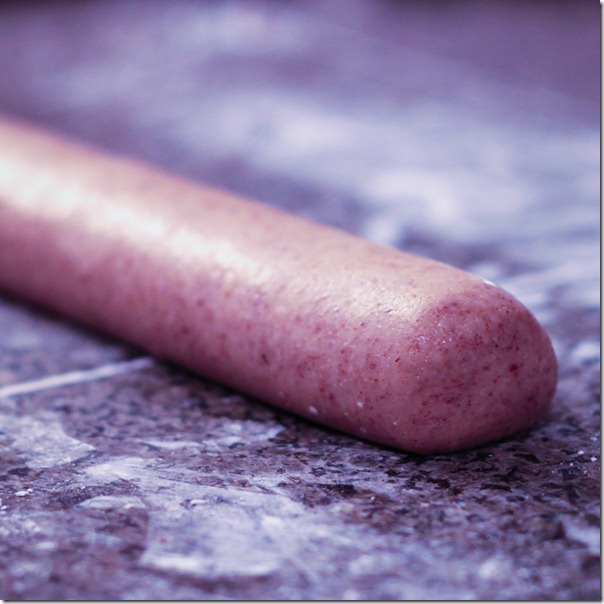
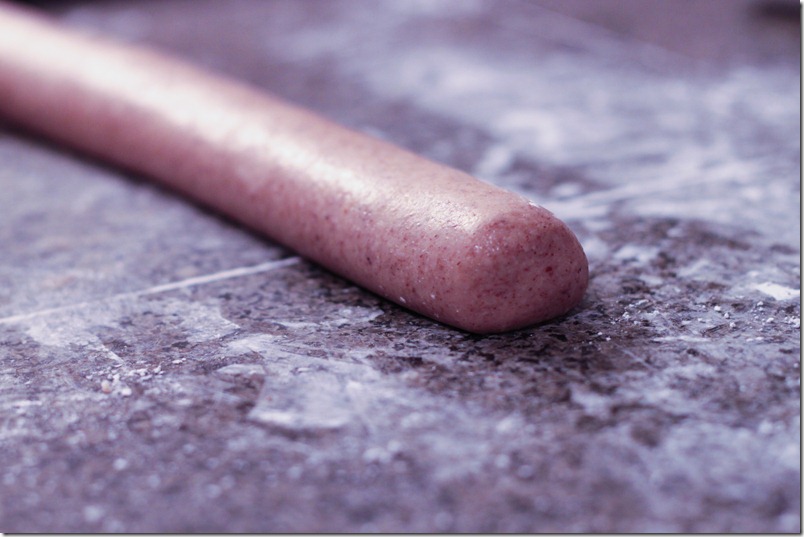
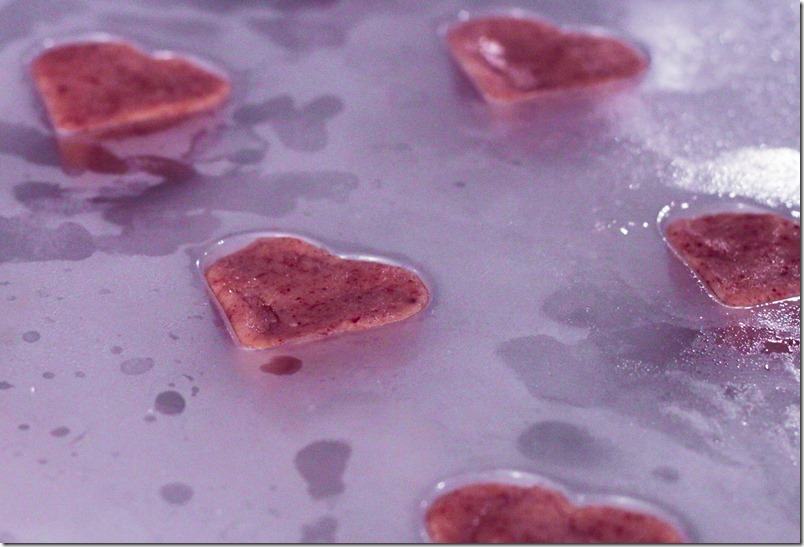
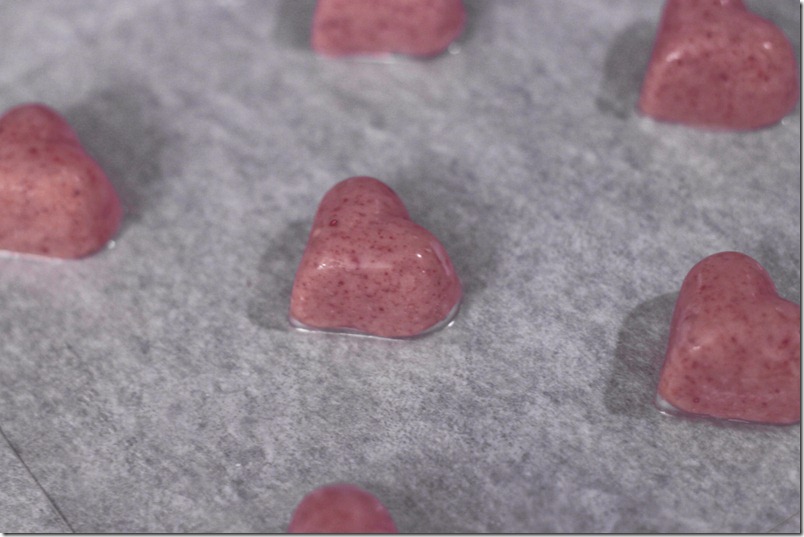
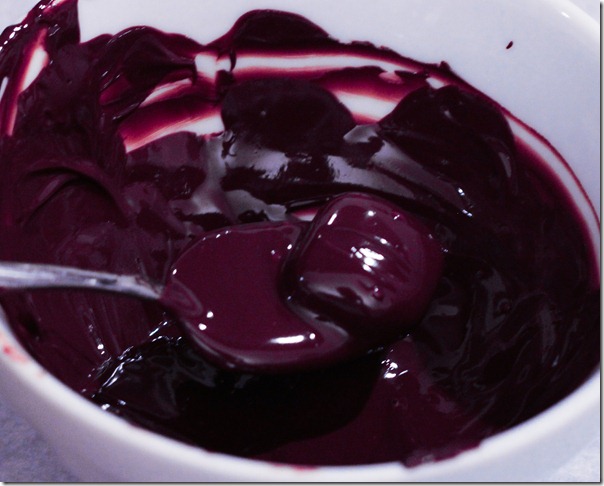
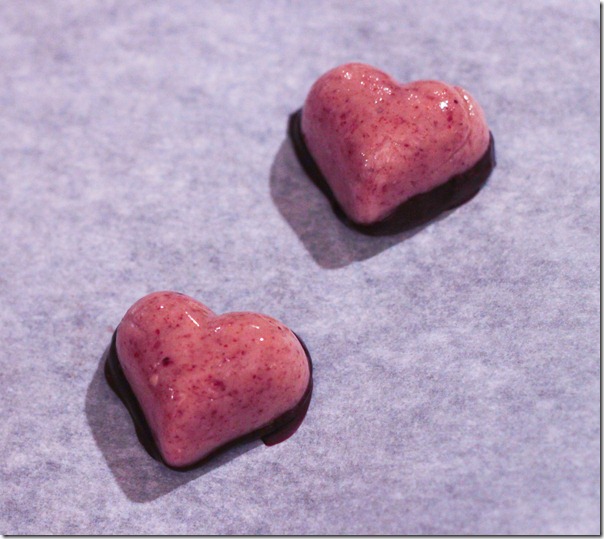
One thought on “Homemade Marzipan Chocolates”